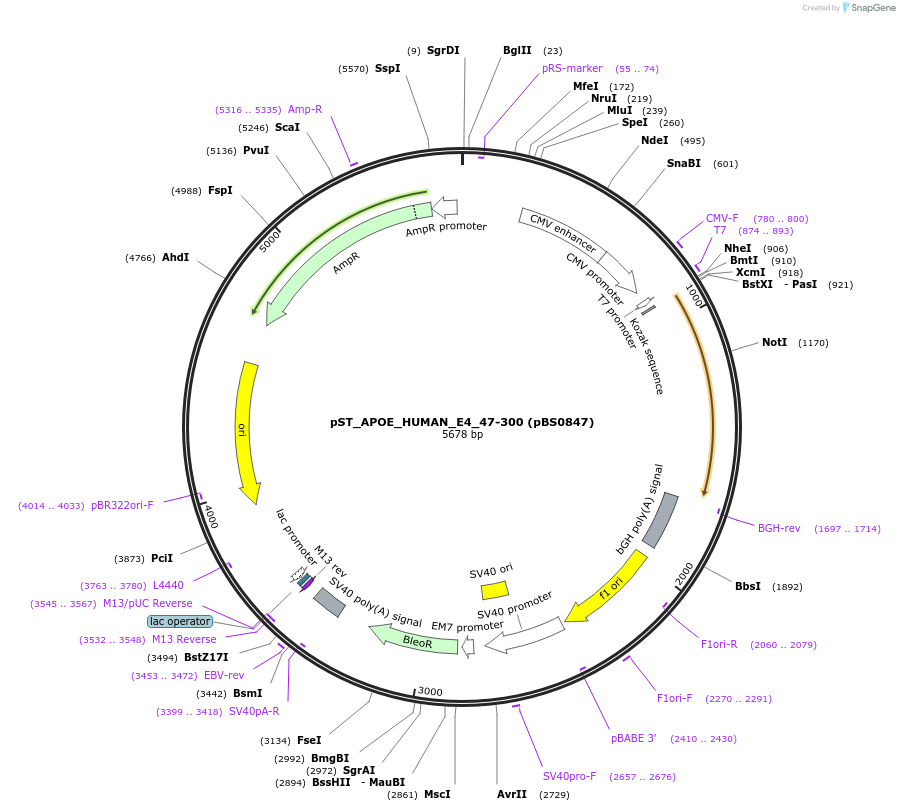pST_APOE_HUMAN_E4_47-300 (pBS0847)
(Plasmid
#185279)
-
PurposeFor the mammalian expression of the human protein APOE_HUMAN_E4_47-300. This is one of the top performing targets in our apoptosis assay (it protected from apoptosis).
-
Depositing Lab
-
Sequence Information
Ordering
| Item | Catalog # | Description | Quantity | Price (USD) | |
|---|---|---|---|---|---|
| Plasmid | 185279 | Standard format: Plasmid sent in bacteria as agar stab | 1 | $89 | |
Backbone
-
Vector backboneYK 02
-
Vector typeMammalian Expression
Growth in Bacteria
-
Bacterial Resistance(s)Ampicillin, 100 μg/mL
-
Growth Temperature37°C
-
Growth Strain(s)DH5alpha
-
Copy numberHigh Copy
Gene/Insert
-
Gene/Insert nameAPOE_HUMAN_E4_47-300
-
SpeciesH. sapiens (human)
-
Insert Size (bp)768
Cloning Information
- Cloning method Gibson Cloning
Resource Information
-
Supplemental Documents
Terms and Licenses
-
Academic/Nonprofit Terms
-
Industry Terms
- Not Available to Industry
Trademarks:
- Zeocin® is an InvivoGen trademark.
Depositor Comments
This is one of the top performing targets in our apoptosis assay (it protected from apoptosis). See supplemental table 2 in our paper to see its performance in our assay. The negative control for this assay is pSecTag2 B which can be obtained from Thermo here https://www.thermofisher.com/order/catalog/product/V90020
These plasmids were created by your colleagues. Please acknowledge the Principal Investigator, cite the article in which the plasmids were described, and include Addgene in the Materials and Methods of your future publications.
-
For your Materials & Methods section:
pST_APOE_HUMAN_E4_47-300 (pBS0847) was a gift from Pamela Silver (Addgene plasmid # 185279 ; http://n2t.net/addgene:185279 ; RRID:Addgene_185279) -
For your References section:
Natural and Designed Proteins Inspired by Extremotolerant Organisms Can Form Condensates and Attenuate Apoptosis in Human Cells. Veling MT, Nguyen DT, Thadani NN, Oster ME, Rollins NJ, Brock KP, Bethel NP, Lim S, Baker D, Way JC, Marks DS, Chang RL, Silver PA. ACS Synth Biol. 2022 Mar 18;11(3):1292-1302. doi: 10.1021/acssynbio.1c00572. Epub 2022 Feb 18. 10.1021/acssynbio.1c00572 PubMed 35176859



